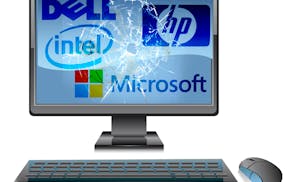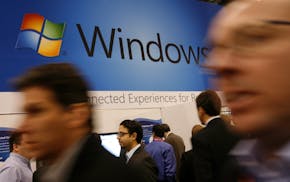Q I have a year-old Dell laptop with Windows Vista Home Premium, and I'd like to find out if it qualifies for the free upgrade to Windows 7 later this year. Your column listed a website, tinyurl.com/16c7eq, where I could find out.
But when I tried to access it via Google, I got a response that it matches no known website. In addition, I got a warning from my anti-spyware program, Zone Alarm, that it does not advise any use of tinyurl.com, because of its propensity for being used to promulgate viruses. What do you think I should do?
BERT COOK, RIVERBANK, CALIF.
A Like anything on the Internet, you have to consider whether you got it from a safe source. Because I created the Web address you refer to, I know it's safe for you to use.
But you raise a good point about safe computing: If you don't know where a link will take you, don't click on it.
The Web address you mention is called a "tiny URL"; it's a useful shortcut for Web browsing that eliminates the problem of having to type long and complicated Web addresses into a Web browser. (URL stands for Uniform Resource Locator, which was the original name for Web addresses.) I used the tiny URL as a substitute for the Dell Web page, which has an address that is a lengthy jumble of letters, numbers and punctuation marks.
The reason Google can't find the tiny URL you mentioned is that it isn't really a Web page; it's just a nickname for the real Dell Web page. When you type the tiny URL into your browser and click the "enter" key, the TinyURL.com website translates the nickname into the real one, and you get to the real website.
Sounds good, so far. But the warning you received from your security software is legitimate; there are security concerns about potential misuse of tiny URLs. An Internet scam artist could use a tiny URL to redirect you to a fake Web page that downloads malicious software or tries to trick you into revealing personal information.
There are three ways you can avoid getting fooled. One is to get your tiny URL from a trusted source, in this case, me. Another way is to check the authenticity of the tiny URL by typing the word "preview" in front of it. The Web address preview.tinyurl.com/l6c7eq takes you to the TinyURL.com website, where you can read the name of the actual Web address the tiny URL stands for. If you still want to go there, click "proceed to this site." A third way is to search Dell.com for the information you want; search for "Windows 7 upgrade" and click on the first item in the search results, "Windows 7 Upgrade Program -- Home."
E-mail tech questions to steve.j.alexander@ gmail.com, or write to Tech Q&A, 425 Portland Av., Minneapolis, MN 55488-0002. Include name, city and phone number.

Alexander: A beeping computer is telling you what's gone wrong inside

Alexander: How to stop deleted iPhone e-mails from coming back

Alexander: Refurbished PCs may need a BIOS update to use new components

Alexander: Windows 11 not always to blame for browser or e-mail problems


